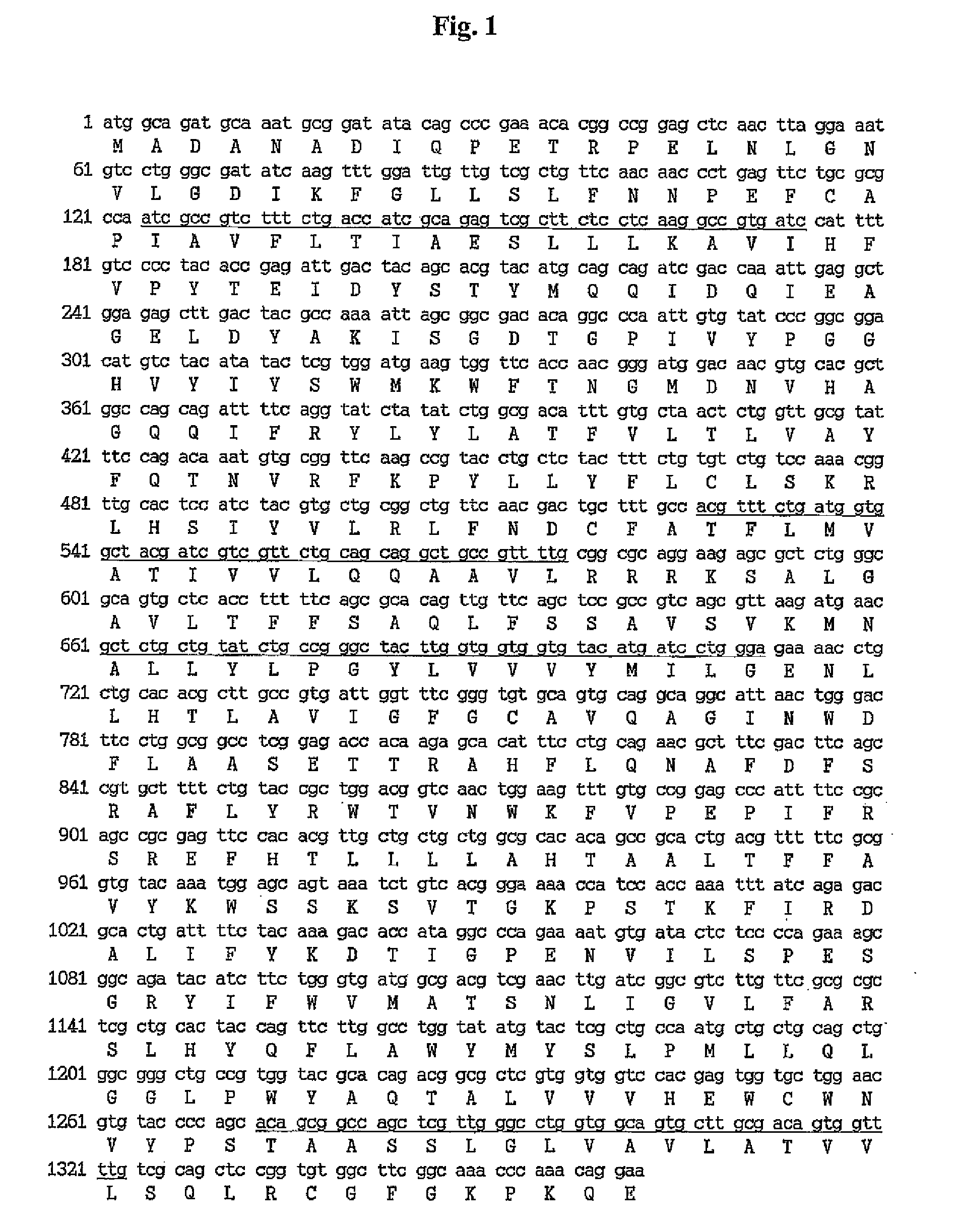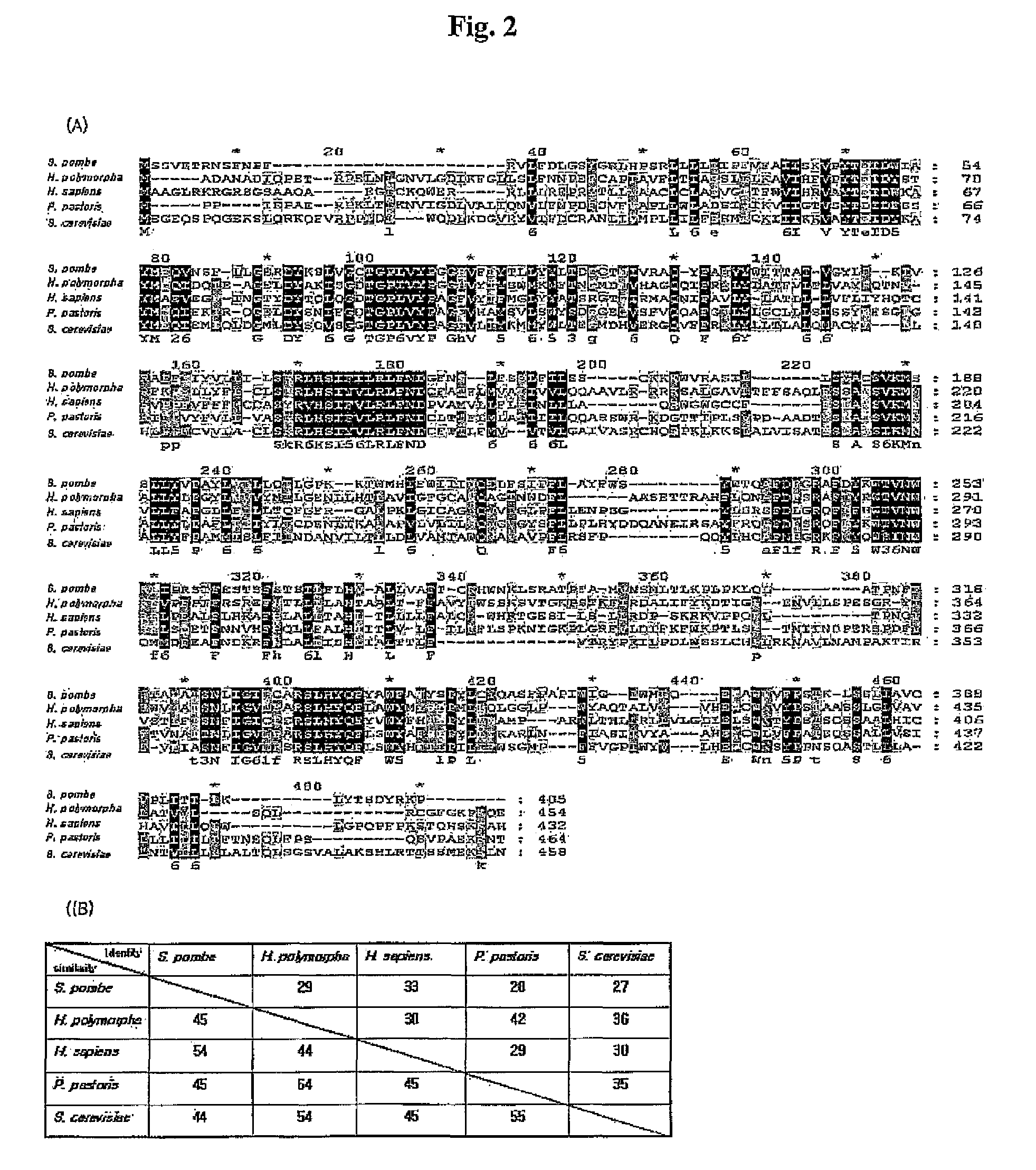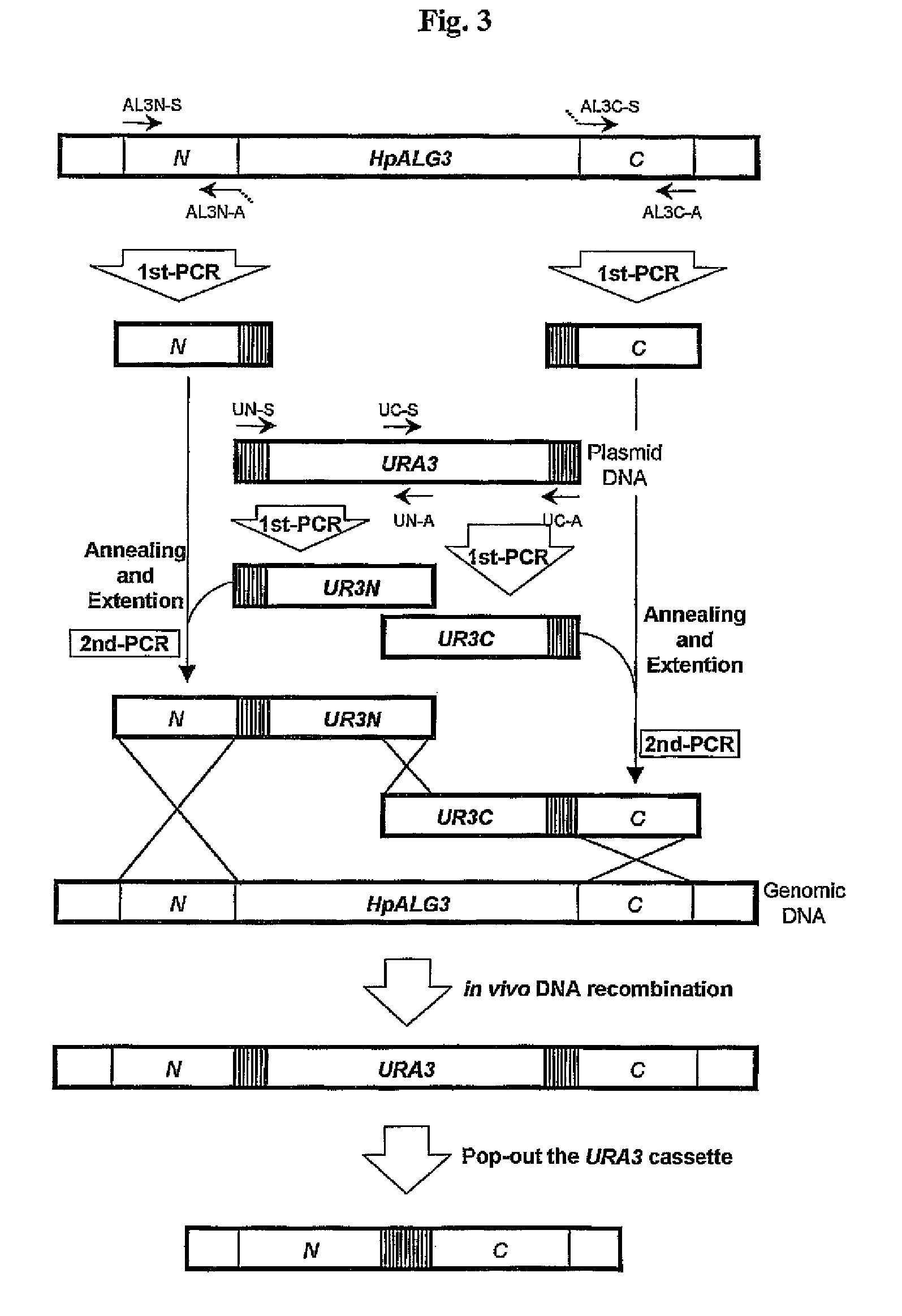Hansenula polymorpha gene coding for dolichyl-phosphate-mannose dependent alpha-1,3-mannosyltransferase and process for the production of recombinant glycoproteins with Hansenula polymorpha mutant strain deficient in the same gene
a technology of hansenula polymorpha and hansenula polymorpha, which is applied in the direction of transferases, enzymology, organic chemistry, etc., can solve the problems of high cost due to expensive culture media, low yield, and risk of infection with viruses and prions
- Summary
- Abstract
- Description
- Claims
- Application Information
AI Technical Summary
Problems solved by technology
Method used
Image
Examples
example 1
Obtainment and Amino Acid Sequence Analysis of Hansenula polymorpha ALG3 Gene
[0055]A polymerase chain reaction (PCR) was carried out using chromosomal DNA, which was extracted from H. polymorpha DL-1 strain (Levine and Cooney, Appl. Microbiol., 26, 982-990, (1973)), as a template and a pair of primers (AL3-N and AL3-C, Table 1). As a result, an obtained DNA fragment of 1.36 kb was sequenced, and subjected to amino acid sequence analysis.
[0056]An open reading frame designated as HpALG3, is found to be 1,362 by in size and encodes a protein consisting of 454 amino acid residues. The HpAlg3 protein had four putative transmembrane spanning regions on its amino acid sequence, and was thus considered to be a membrane protein (FIG. 1). In FIG. 1, the four putative transmembrane spanning regions are underlined at amino acid residues from 42 to 58, from 176 to 192, from 221 to 237, and from 425 to 441. The HpAlg3 protein exhibited a 30% identity and a 44% similarity with human (Homo sapiens)...
example 2
Construction of HpALG3 Gene-Deficient Strain and Analysis of Characteristics of the Strain
[0058]In order to construct a mutant strain disrupted in the HpALG3 gene, gene disruption was performed by a combination of fusion PCR with the primers (primers used in PCR for cloning and disruption of the HpALG3 gene) listed in Table 1 and in vivo homologous recombination (Oldenburg et al., Nucleic Acid Res., 25, 451, (1997)). Primary PCR were carried out with four pairs of primers to amplify 5′-end and 3′-end regions of the URA3 gene (UN-S and UN-A primers for 5′-end region, UC-S and UC-A primers for 3′-end region) and the HpALG3 gene (AL3N-S and AL3N-A primers for 5′-end fragment, AL3C-S and AL3C-A primers for 3′-end fragment). Secondary fusion PCR were then carried out to link the 5′-end fragment of the HpALG3 gene to the 5′ region of the URA3 gene (using a pair of AL3N-S and UN-A primers) and to link the 3′ region of the URA3 gene to the 3′-end fragment of the HpALG3 gene (using a pair of...
example 3
Structural Analysis of N-Glycans Assembled on a Glycoprotein Produced from the Hpalg3Δ Mutant
[0059]To analyze the N-glycan structures of a glycoprotein synthesized in the Hpalg3Δ mutant prepared in Example 2, an H. polymorpha glycoprotein, yapsin 1 (Yps1p), was expressed in a secreted form in the H. polymorpha wild-type and Hpalg3Δ mutant strains. The glycoprotein, Yps1p, has four putative amino acid sequences for N-linked glycosylation. The H. polymorpha wild-type and Hpalg3Δ mutant strains were individually transformed with a pDLMOX-YPS1 (H) vector expressing Yps1p tagged with six-histidine residues under the MOX promoter (Y J Kim, Biosynthesis and Maturation of Yapsins in the Methylotropic Yeast Hansenula polymorpha, master's thesis, National Chungnam University, Korea (2005)). The transformants were grown in YPD medium and transferred to YPM medium (1% yeast extract, 2% Bacto-peptone, 2% methanol) to induce the expression of Yps1p. The collected culture medium, which contains se...
PUM
| Property | Measurement | Unit |
|---|---|---|
| water solubility | aaaaa | aaaaa |
| stability | aaaaa | aaaaa |
| cell density | aaaaa | aaaaa |
Abstract
Description
Claims
Application Information
 Login to View More
Login to View More - R&D
- Intellectual Property
- Life Sciences
- Materials
- Tech Scout
- Unparalleled Data Quality
- Higher Quality Content
- 60% Fewer Hallucinations
Browse by: Latest US Patents, China's latest patents, Technical Efficacy Thesaurus, Application Domain, Technology Topic, Popular Technical Reports.
© 2025 PatSnap. All rights reserved.Legal|Privacy policy|Modern Slavery Act Transparency Statement|Sitemap|About US| Contact US: help@patsnap.com



